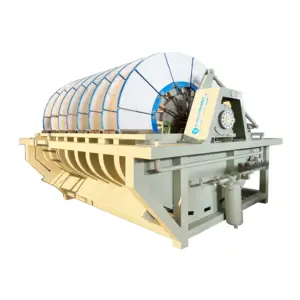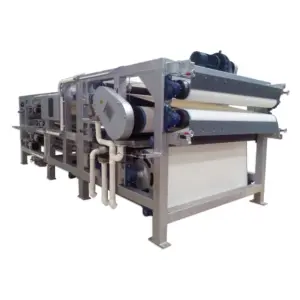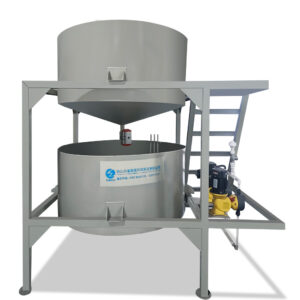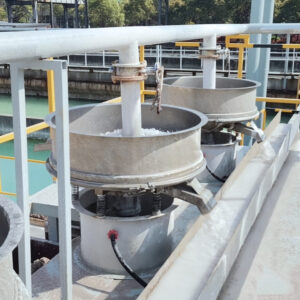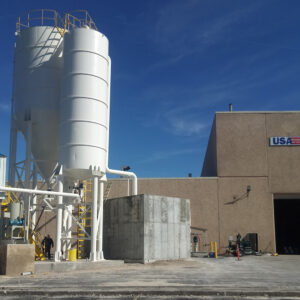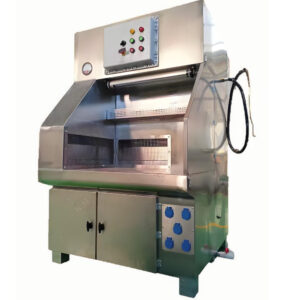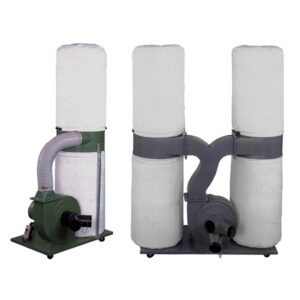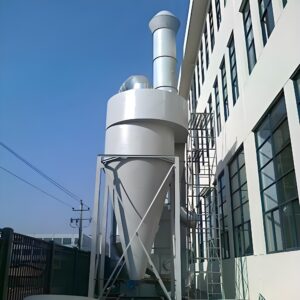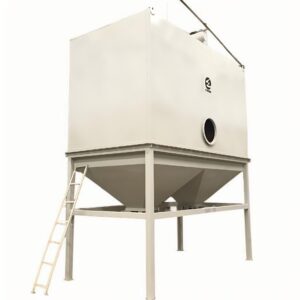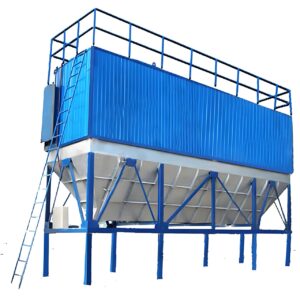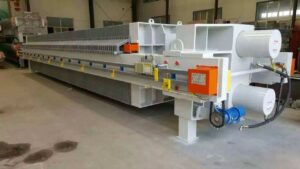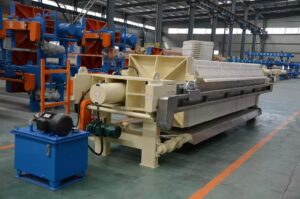The wood manufacturing industry faces mounting pressure to address environmental concerns while maintaining operational efficiency. Board processing water treatment has emerged as a critical component for sustainable operations, with facilities processing millions of gallons of contaminated water daily. Recent industry studies reveal that inadequate wastewater management can result in regulatory fines exceeding $100,000 per violation, while proper treatment systems can reduce water consumption by up to 60% through recycling initiatives.
Wood processing facilities generate complex wastewater streams containing suspended solids, organic compounds, and chemical additives that require specialized treatment approaches. Without effective treatment systems, these contaminants pose significant environmental risks and regulatory compliance challenges. The consequences extend beyond financial penalties—untreated discharge can damage local ecosystems, contaminate groundwater sources, and severely impact a company’s reputation and operational licenses.
This comprehensive guide explores proven strategies for implementing effective board processing water treatment systems, examining cutting-edge technologies, regulatory requirements, and practical solutions that leading wood manufacturers use to achieve both environmental compliance and operational excellence.
What is Board Processing Water Treatment and Why Does It Matter?
Board processing water treatment encompasses the comprehensive management and purification of wastewater generated during wood manufacturing operations. PORVOO Clean Tech has observed that modern facilities require integrated approaches combining physical, chemical, and biological treatment methods to address the diverse contaminants present in wood industry effluent.
Understanding Wastewater Composition in Wood Manufacturing
Wood industry wastewater treatment systems must address multiple contamination sources simultaneously. The primary contaminants include wood fibers, bark particles, lignin compounds, and various chemical additives used in processing. Research conducted by the Forest Products Laboratory indicates that suspended solids concentrations can range from 500-5,000 mg/L, significantly exceeding typical discharge limits of 30 mg/L.
Chemical oxygen demand (COD) levels in untreated timber factory wastewater frequently exceed 1,000 mg/L, with some facilities reporting concentrations as high as 3,500 mg/L. These elevated levels result from dissolved organic compounds released during wood breakdown and chemical treatments applied during processing.
Regulatory Framework and Compliance Requirements
Environmental regulations governing lumber processing water treatment have become increasingly stringent. The EPA’s Timber Products Point Source Category establishes specific discharge limitations, with facilities required to achieve 95% removal efficiency for suspended solids and 80% reduction in COD levels.
In our experience working with diverse wood manufacturing operations, compliance extends beyond basic discharge limits. Many facilities must also address pH fluctuations, oil and grease content, and specific chemical parameters depending on their processing methods and local regulations.
How Do Wood Manufacturing Facilities Generate Wastewater?
The wastewater generation process in wood manufacturing is complex and varies significantly based on production methods, raw materials, and facility operations. Understanding these sources is essential for designing effective treatment systems.
Primary Generation Sources
Log preparation and debarking operations represent the largest volume source of contaminated water in most facilities. These processes generate substantial quantities of fiber-laden wastewater, with suspended solids concentrations typically ranging from 2,000-4,000 mg/L. The mechanical action of debarking releases tannins and other organic compounds that contribute to high COD levels.
Wood washing and cleaning operations contribute additional contamination through the removal of dirt, sand, and residual bark particles. These processes often require heated water, which can increase the solubility of organic compounds and create more challenging treatment scenarios.
Secondary Contamination Pathways
Equipment cleaning and maintenance activities introduce varied contaminants including lubricants, hydraulic fluids, and cleaning chemicals. While these sources represent smaller volumes, they can significantly impact treatment system performance and require specialized handling approaches.
Stormwater runoff from log storage areas creates intermittent but substantial contamination events. Studies show that runoff from timber storage can contain suspended solids concentrations exceeding 1,500 mg/L during significant precipitation events.
| Wastewater Source | Volume (% of total) | Primary Contaminants | Treatment Priority |
|---|---|---|---|
| Log debarking | 45-60% | Suspended solids, tannins | High |
| Wood washing | 20-30% | Fibers, organic compounds | High |
| Equipment cleaning | 10-15% | Oils, chemicals | Medium |
| Stormwater runoff | 5-20% | Suspended solids, debris | Variable |
Process-Specific Considerations
Different wood processing methods generate distinct wastewater characteristics requiring tailored treatment approaches. Veneer production facilities typically generate higher volumes of heated wastewater with elevated organic content, while sawmill operations produce more fiber-laden streams with lower chemical contamination.
What Are the Key Components of Effective Board Processing Water Treatment Systems?
Successful wood manufacturing effluent treatment requires integrated systems combining multiple treatment technologies. Each component addresses specific contaminants while supporting overall system performance and reliability.
Primary Treatment Technologies
Physical separation forms the foundation of effective board processing water treatment. Primary clarification systems remove 70-85% of suspended solids through gravity settling, with properly designed units achieving effluent concentrations below 100 mg/L. Modern installations incorporate inclined plate settlers or dissolved air flotation systems to enhance removal efficiency within compact footprints.
Screening and filtration systems provide essential pretreatment for downstream processes. Rotary drum screens with 0.5-1.0mm openings effectively remove wood fibers and bark particles, while protecting subsequent treatment equipment from damage and clogging.
Advanced Treatment Methods
Biological treatment systems excel at reducing organic contamination in timber factory wastewater. Activated sludge processes can achieve COD removal rates exceeding 90% when properly designed and operated. However, wood industry applications require careful attention to nutrient balancing, as wood-derived wastewater often lacks sufficient nitrogen and phosphorus for optimal biological activity.
Chemical treatment approaches address specific contamination challenges that physical and biological methods cannot resolve. Coagulation and flocculation processes using aluminum or iron-based chemicals enhance suspended solids removal, while advanced oxidation processes can address recalcitrant organic compounds.
Integrated System Design
Modern wastewater treatment systems combine multiple technologies in optimized configurations. The most effective designs incorporate recycle streams that allow treated water reuse for process applications, reducing fresh water consumption by 40-60%.
Treatment system reliability depends heavily on proper equipment selection and redundancy planning. Critical components such as pumps, blowers, and control systems require backup units to ensure continuous operation during maintenance or equipment failures.
How to Choose the Right Water Treatment Technology for Your Wood Facility?
Selecting appropriate treatment technology requires comprehensive evaluation of facility-specific factors including wastewater characteristics, discharge requirements, and operational constraints. The decision process should consider both immediate needs and long-term operational goals.
Assessment of Wastewater Characteristics
Detailed characterization of wastewater streams provides the foundation for technology selection. Key parameters include flow rates, suspended solids concentrations, COD levels, pH variations, and temperature ranges. Seasonal variations can significantly impact these parameters, requiring treatment systems capable of handling peak loading conditions.
Laboratory treatability studies help validate technology performance under actual operating conditions. These studies, typically conducted over 4-6 weeks, evaluate removal efficiency, chemical requirements, and potential operational challenges before full-scale implementation.
Technology Comparison Matrix
| Treatment Technology | Suspended Solids Removal | COD Reduction | Capital Cost | Operating Cost | Maintenance Requirements |
|---|---|---|---|---|---|
| Primary Clarification | 70-85% | 20-30% | Low | Low | Minimal |
| Dissolved Air Flotation | 85-95% | 30-40% | Medium | Medium | Moderate |
| Biological Treatment | 40-60% | 80-95% | High | Medium | High |
| Membrane Filtration | 95-99% | 60-80% | High | High | Moderate |
Site-Specific Considerations
Available space often constrains technology selection, particularly for existing facilities requiring retrofitted treatment systems. Compact technologies such as dissolved air flotation or membrane bioreactors may be necessary despite higher capital costs.
Operational expertise and maintenance capabilities significantly influence technology selection. Biological treatment systems require skilled operators and consistent attention, while physical treatment methods offer simpler operation but limited contaminant removal capabilities.
What Challenges Do Wood Manufacturers Face with Wastewater Management?
The wood manufacturing industry encounters unique challenges in wastewater management that distinguish it from other industrial sectors. Understanding these challenges enables more effective treatment system design and operation.
Regulatory Compliance Complexity
Environmental regulations affecting lumber processing water treatment continue evolving, with increasingly stringent discharge limits and expanded monitoring requirements. Recent changes to federal pretreatment standards have reduced allowable suspended solids concentrations from 60 mg/L to 30 mg/L, requiring many facilities to upgrade existing treatment systems.
Permitting processes for new treatment installations can extend 12-18 months, creating significant project delays. In our experience, facilities that engage regulatory agencies early in the design process typically achieve faster approval timelines and avoid costly modifications.
Seasonal Variations and Peak Loading
Wood processing operations experience significant seasonal variations in both production levels and wastewater characteristics. Spring operations often involve processing winter-stored logs with higher moisture content and increased contamination, creating treatment challenges during periods of peak production.
Stormwater management represents a particular challenge for outdoor storage facilities. A single significant rainfall event can generate wastewater volumes exceeding normal daily production by 300-500%, requiring treatment systems with substantial surge capacity or equalization capabilities.
Economic Pressures and Cost Management
Treatment system operating costs directly impact facility profitability, with energy consumption representing 40-60% of total operating expenses. Rising utility costs have prompted many facilities to investigate energy recovery opportunities, including biogas generation from biological treatment processes.
While effective treatment systems require substantial capital investment, the long-term benefits often justify the initial costs. Facilities implementing comprehensive water treatment solutions typically achieve 15-25% reduction in total water costs through recycling and reuse programs.
How Can Advanced Treatment Systems Improve Environmental Compliance?
Advanced treatment technologies offer wood manufacturers the capability to exceed regulatory requirements while establishing sustainable operational practices. These systems provide operational flexibility and environmental performance that traditional approaches cannot achieve.
Membrane Technology Applications
Membrane filtration systems deliver exceptional contaminant removal performance, achieving suspended solids concentrations below 10 mg/L and COD reductions exceeding 85%. Ultrafiltration membranes effectively remove wood fibers, colloidal particles, and many dissolved organic compounds that conventional treatment cannot address.
Recent advances in membrane technology have improved fouling resistance and reduced operating costs. Modern spiral-wound membranes designed for industrial applications can operate continuously for 6-12 months before requiring cleaning, significantly reducing maintenance requirements.
Automated Control and Monitoring
Modern treatment systems incorporate sophisticated control systems that optimize performance while reducing operator requirements. Real-time monitoring of key parameters including pH, suspended solids, and dissolved oxygen enables automated adjustments that maintain optimal treatment conditions.
Predictive maintenance capabilities identify potential equipment problems before failures occur, reducing unplanned downtime and maintenance costs. These systems can predict pump failures, membrane fouling, and other operational issues days or weeks before they impact system performance.
Water Recycling and Reuse Opportunities
Advanced treatment systems enable significant water recycling opportunities within wood manufacturing operations. Treated water meeting appropriate quality standards can be reused for log washing, dust control, and equipment cooling, reducing fresh water consumption by 50-70%.
Closed-loop systems represent the ultimate in water conservation, recycling virtually all process water after treatment. While these systems require higher initial investment, they eliminate discharge requirements and provide substantial long-term cost savings.
What Are the Economic Benefits of Implementing Proper Water Treatment?
Investment in effective board processing water treatment systems delivers measurable economic benefits that extend well beyond regulatory compliance. These benefits accumulate over time and often exceed initial capital investment within 3-5 years.
Direct Cost Savings
Water recycling capabilities provide immediate cost savings through reduced fresh water consumption. Facilities implementing comprehensive recycling programs typically reduce water purchases by 40-60%, delivering annual savings of $50,000-$200,000 depending on facility size and local water costs.
Reduced wastewater discharge volumes lower municipal treatment fees, which can represent substantial ongoing expenses. Many facilities pay $2-5 per 1,000 gallons for wastewater treatment, making discharge reduction economically attractive.
Regulatory Risk Mitigation
Proper treatment systems eliminate the risk of regulatory violations and associated penalties. Environmental fines for water quality violations can exceed $100,000 per incident, with repeat violations resulting in facility closure orders.
Insurance cost reductions often result from demonstrated environmental compliance and risk management. Many insurers offer reduced premiums for facilities with comprehensive environmental management programs, including effective wastewater treatment systems.
Operational Efficiency Improvements
Modern treatment systems often improve overall facility efficiency through better water management and process optimization. Consistent water quality enables more predictable production processes and reduces equipment maintenance requirements.
The implementation of proper water treatment systems positions wood manufacturers for long-term success in an increasingly environmentally conscious market. These systems provide the foundation for sustainable operations while delivering measurable economic benefits through reduced resource consumption and regulatory compliance.
Facilities considering treatment system upgrades should evaluate both immediate needs and long-term operational goals. The most successful installations combine proven technologies with comprehensive operational support to ensure consistent performance and maximum return on investment. For wood manufacturers ready to implement effective water treatment solutions, comprehensive treatment systems provide the reliability and performance necessary for sustainable operations.
What specific challenges does your facility face with wastewater management, and how might advanced treatment technologies address these concerns while supporting your long-term operational objectives?
Frequently Asked Questions
Q: What is Board Processing Water Treatment in Wood Industry Systems?
A: Board Processing Water Treatment in Wood Industry Systems refers to the specialized treatment of wastewater generated during the manufacturing of wood-based boards, such as MDF or OSB. This process water contains organic compounds, resins, and suspended solids that must be treated to meet environmental discharge regulations. Effective treatment ensures the removal of contaminants like biological oxygen demand (BOD) and total suspended solids (TSS) before recycling or discharge, helping the wood industry reduce environmental impact and preserve water resources.
Q: Why is water treatment important in the wood board manufacturing process?
A: Water treatment is essential because the production of wood boards releases process water rich in organic pollutants, resins, and suspended solids. Untreated, this water can harm aquatic ecosystems due to its high contaminant load. Treating the water protects the environment, ensures compliance with regulations, and enables the reuse of treated water in manufacturing. This reduces fresh water consumption and operational costs while managing waste sustainably.
Q: What methods are commonly used for Board Processing Water Treatment in wood industries?
A: Common methods include:
- Physicochemical treatment: Coagulation, flocculation, and sedimentation reduce suspended solids and chemical oxygen demand (COD).
- Biological treatment: Bioreactors use microorganisms to degrade organic pollutants, lowering BOD levels.
- Membrane technology: Used for fine filtration and concentration, achieving high water recovery rates in zero liquid discharge systems.
- Vacuum evaporation: Separates water from contaminants for reuse and generates usable waste concentrates.
These methods can be combined to optimize treatment efficiency and water recycling within the wood industry.
Q: How does Board Processing Water Treatment contribute to sustainability in wood industry systems?
A: This treatment significantly improves sustainability by:
- Recycling 90-95% of process water, greatly reducing fresh water use.
- Recovering valuable outputs like treated water suitable for reuse in scrubbing or boiler make-up water, lowering chemical and energy consumption.
- Minimizing discharged contaminants, protecting aquatic environments.
- Reducing sludge and biomass waste through advanced treatment technologies, facilitating waste valorization or safe disposal.
Overall, it supports circular water use and reduces the environmental footprint of wood board manufacturing.
Q: What challenges are faced in treating wastewater from board processing, and how are modern systems overcoming them?
A: Challenges include high levels of organic compounds, variability in water quality, and stringent discharge limits. Traditional systems often produce waste sludge and insufficiently treated effluent. Modern solutions address these by:
- Combining physical, chemical, and biological processes with membrane filtration for higher pollutant removal and water recovery.
- Implementing zero discharge effluent plants that recycle nearly all water and produce reusable by-products.
- Using innovative aeration and nutrient management in bioreactors to optimize biological degradation.
These advancements improve treatment efficiency, cost-effectiveness, and regulatory compliance in wood industry water treatment.
Q: Can treated water from board processing systems be reused in wood manufacturing?
A: Yes, treated water can be safely reused in several stages of wood manufacturing. Recycled water is commonly used for chip washing, scrubber make-up water, and boiler feed water after further treatment steps like activated carbon filtration to ensure low hardness and contaminant levels. This reuse reduces fresh water demand and operational costs while maintaining product quality and environmental standards.
External Resources
Remediation of Oriented Strand Board (OSB) Process Water – This research paper examines the treatment technologies for process water generated from oriented strand board production, focusing on the reduction of pollutants such as BOD and total suspended solids using bioreactors.
Wastewater treatment in MDF boards production – This article discusses wastewater treatment processes specific to MDF board manufacturing, detailing technologies like physicochemical treatment, vacuum evaporation, and bioreactors for water reuse and regulatory compliance.
Wood Processing and Panel Board – Esmil Process Systems Ltd – Esmil describes advanced zero-discharge water treatment systems for the wood and panel board industry, highlighting innovations in water recovery, membrane technology, and effluent recycling.
Paper and Wood Industry | HUBER Technology – HUBER presents water purification and residue treatment solutions for paper, pulp, and wood processing industries, emphasizing sustainable water management and cost reduction in industrial operations.
Wastewater treatment in wood processing | ClearFox® – ClearFox outlines a real-world project involving pH neutralization and temperature control for board production wastewater, ensuring regulatory discharge compliance in wood processing.
SUEZ Water Technologies & Solutions: Pulp & Paper Industry – SUEZ provides comprehensive water treatment technologies tailored to the wood, pulp, and paper industries, including advanced systems for wastewater management in panel and board manufacturing.
